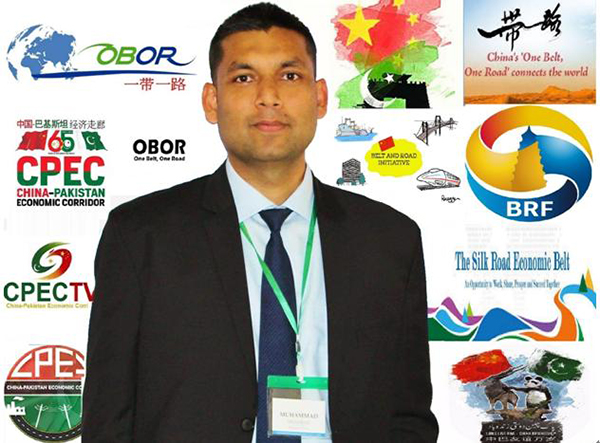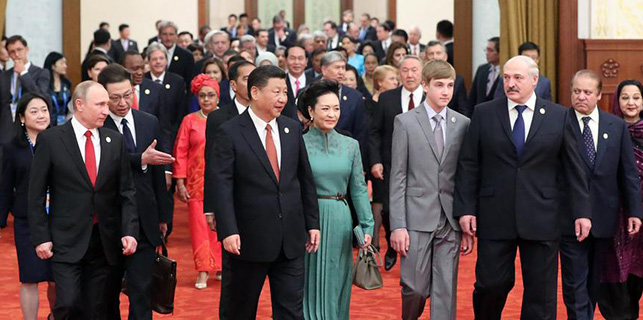How the Belt & Road could become a "Health Corridor"
 |
|
Dr Muhammad Shahbaz is a PhD Student at Shandong University School of Medicine, CSC (China Scholarship Council) recipient.[Photo provided to chinadaily.com.cn] |
Whenever I take a taxi or a train, go shopping, go to Qilu Hospital or speak Chinese, people ask me "where are you from?" When I tell them I am from Pakistan, people smile and often respond "o ba tie xiongdi" which translates to "iron brother". There is a saying that "Pakistan and China's friendship is higher than mountains, deeper than the ocean and sweeter than honey". And with every passing day the relationship is becoming stronger.
On Sunday, May 14, the opening ceremony of the Belt and Road Inititative was held in Beijing. Heads of states from more than 27 countries participated in the opening ceremony and joined together to enhance the cooperation for the establishment and renovation of the Silk Road.
My connection with the Silk Road is multi-dimensional, and its impact on the lives of the people in the countries involved is long lasting. In the summer of 2015, a group of engineers were about to go to Pakistan to work on a coal-fired power plant in Punjab, one of the mega projects in the Pakistan China economic corridor. Mr Paul (Sun Peng) suggested I teach them about the culture of Pakistan before they left. At that time I was not really aware of the impact of the CPEC and the Belt and Road Initiative but I knew something big was coming. The following year, everyone was talking about the Chinese dream and vision. Now, in 2017 its everywhere.
Since the opening ceremony of the Belt and Road Forum, there has been more focus, locally and internationally, on the China Pakistan Economic Corridor. It is aimed at regional integration for peace and economic development, paving the way for the socio-economic development of Pakistan.
The corridor brings lots of opportunities and connectivity for the two nations and all nations linked indirectly, contributing to the rise of Asia. The major areas of cooperation are Gwadar (including the port and city), energy (coal, hydel, wind, solar, LNG , transmission), transport infrastructure (roads, rail, aviation), investment and industrial cooperation (Gwadar Free Zone and other industrial parks to be finalized) and hospitals.
As the second least expensive country, with the seventh largest pool of scientists and engineers and majority youth population, Pakistan is a land of potential. China, with the largest GDP, largest manufacturing sector and highest exports is the land of opportunity.
My perspective of the CPEC is different. As a surgeon and PhD scholar at Shandong University, and having spent more than a decade in China as a medical student, I see it more from the healthcare point of view. I hope that the corridor will also bring healthcare facilities and infrastructure cooperation in Pakistan and China. I have re-named it the CPHC - the China Pakistan Health Corridor or simply "The Health Corridor".
The Health Corridor can consist of but is not limited to hospitals, the pharmaceutical industry, medical research and medical exchange programs. The Pak China friendship hospital at Gawadar has been planned and $100 million has been put aside for it. The proposed project will boost health facilities as it will include medical blocks, nursing and paramedical institutes, a medical college, central laboratory and medical equipment and machinery. Another emergency hospital constructed by the Red Cross Society of China was inaugurated this month with the purpose of providing health facilities to workers engaged in development projects and local people.
- First private bank in China's rust belt starts operation
- Xi, world leaders reach Belt and Road pacts
- European Investment Bank pledges support for Belt and Road plan
- Belt and Road a new platform for China, Japan: Xi
- Belt and Road documentary films promoted in Guangdong
- Belt and Road Initiative boosts Africa's infrastructural connectivity
- Malaysia's CIMB to aid Belt and Road financing














